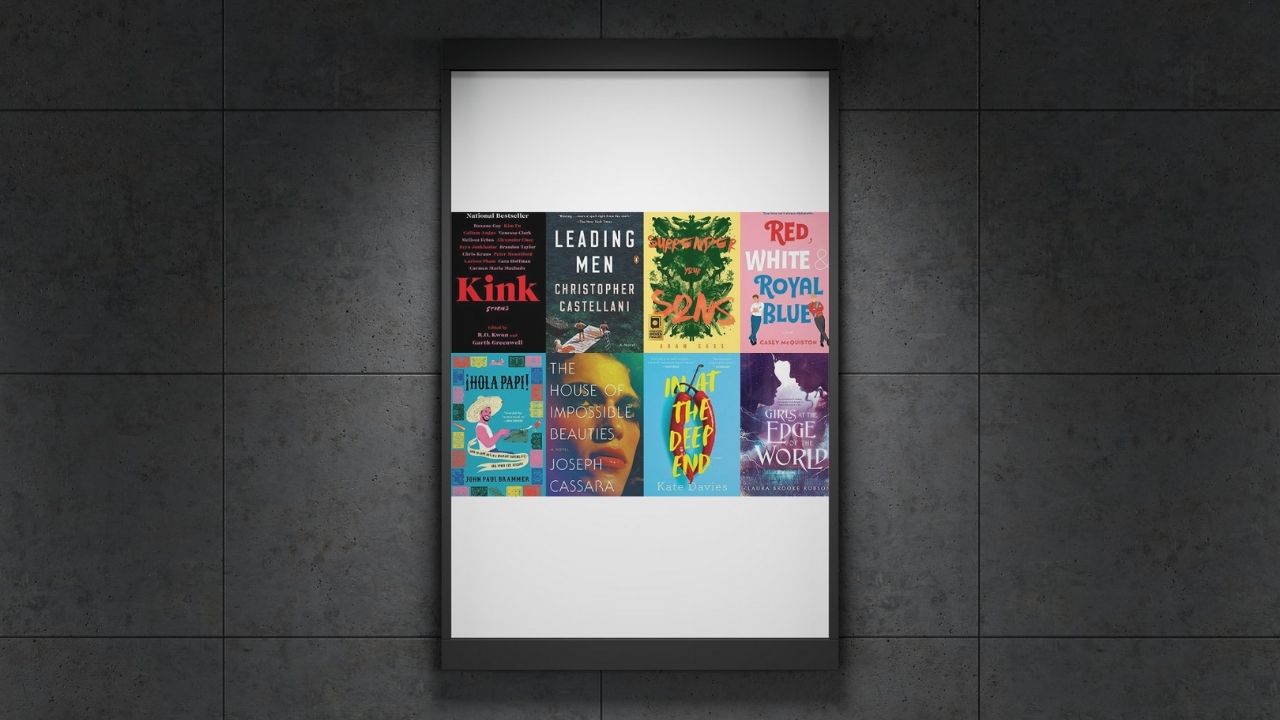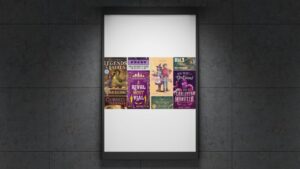The Importance of Diversity in Fantasy Literature
Fantasy literature has long been a genre where imagination knows no bounds, inviting readers into worlds filled with magic, mythical creatures, and epic quests. However, while many fantasy books have traditionally been populated with stereotypical characters and familiar tropes, the genre is evolving. In recent years, there has been a growing recognition of the need for diversity in fantasy stories. Diverse characters, perspectives, and themes enrich the genre, making it more inclusive and reflective of the wide array of human experiences.
The Growing Demand for Inclusive Narratives
As readers become more conscious of the importance of representation, the demand for inclusive narratives has surged. Queer characters, stories that explore LGBTQ+ identities, and narratives that challenge traditional gender norms are being embraced more than ever. For many readers, seeing themselves represented in fantasy literature is not just a matter of inclusion; it is a way to validate their identities, experiences, and desires for new forms of storytelling. Authors are increasingly weaving queer themes and characters into their narratives, offering fresh, nuanced perspectives that break away from the heteronormative structures that once dominated the genre.
Purpose of the Article
In this article, we will guide you through a carefully curated list of must-read fantasy books that feature diverse perspectives and queer representation. These books not only offer engaging plots and imaginative worlds but also challenge traditional boundaries of storytelling by including LGBTQ+ characters and themes. Whether you are seeking adventures with queer protagonists, exploring themes of identity and belonging, or looking for books that break the mold of traditional fantasy, this list will help you discover works that celebrate diversity and inclusivity.
Why Diversity in Fantasy Matters
Impact on Readers
Inclusive stories have the power to deeply impact readers, especially those from marginalized communities. For many, seeing characters who reflect their own experiences—whether related to gender, sexuality, ethnicity, or ability—can be transformative. Representation in literature provides validation and recognition, helping readers feel seen and heard. Moreover, diverse stories can broaden the horizon for all readers by fostering empathy, understanding, and the ability to relate to perspectives outside their own. When fantasy literature includes a wide range of identities, it opens doors for readers to engage with new viewpoints, question their assumptions, and develop a more inclusive worldview.
For marginalized communities, inclusive stories are particularly empowering. Queer readers, for example, are able to see themselves as heroes, adventurers, and leaders within fantastical settings, rather than just side characters or token figures. These narratives challenge the notion that LGBTQ+ people are secondary or unworthy of being central to epic tales, proving that fantasy is for everyone, regardless of identity.
Historical Gaps
Traditionally, fantasy literature has been dominated by heteronormative, cisgender characters and narratives. For many years, queer representation in fantasy was either nonexistent or relegated to the background, often tokenized or poorly executed when it did appear. Classic fantasy works, such as those by J.R.R. Tolkien, C.S. Lewis, and other giants of the genre, often lacked LGBTQ+ characters and, when they did appear, they were rarely portrayed in a meaningful or positive light. This historical gap in representation left queer readers with little to no sense of belonging or affirmation within the worlds they loved.
The lack of queer representation in classic fantasy also meant that fantasy storytelling was, for a long time, limited by a narrow lens of experiences, primarily focusing on heterosexual, cisgender protagonists. This left out a vast array of voices, perspectives, and potential stories that could enrich the genre. The absence of queer representation in fantasy was a disservice not only to queer readers but to the genre as a whole, stunting its potential for growth and innovation.
Changing Trends
In recent years, there has been a noticeable shift in the fantasy genre. Modern fantasy literature is embracing diversity in ways that were previously unthinkable. Authors are actively creating space for queer characters, complex relationships, and narratives that explore LGBTQ+ themes. These stories are no longer the exception but a growing trend, with many of today’s most popular and critically acclaimed fantasy books featuring diverse voices and perspectives.
This change is a reflection of a larger cultural shift towards inclusivity and acceptance, as readers demand more authentic and representative stories. Authors like N.K. Jemisin, Sarah Gailey, and Tamsyn Muir, among others, have not only introduced LGBTQ+ characters into their worlds but have made them central to their narratives, showing that queer characters can be the heroes of their own stories. These authors and many others are redefining what fantasy can be, proving that diverse voices and experiences are not just a trend but an essential part of the genre’s evolution.
As the genre continues to evolve, it is important to recognize that diversity in fantasy isn’t just about representation—it’s about broadening the scope of what is possible in storytelling. When we embrace diverse voices, we expand the worlds we can imagine, allowing for richer, more layered tales that reflect the complexities of the real world while still indulging in the magic and wonder that make fantasy so beloved.
Key Themes in Queer Fantasy
Identity and Self-Discovery
One of the most powerful themes explored in queer fantasy is the journey of self-acceptance and identity. Many queer characters in fantasy literature go on personal quests to discover who they truly are, often facing internal struggles as they come to terms with their identities in worlds that may not fully accept them. These stories provide a rich space for exploring the complexities of gender, sexuality, and the many facets of self-realization. Characters may struggle with societal norms, question their place in the world, or experience the tensions between personal desire and external expectations.
Fantasy worlds, with their magic and fantastical elements, offer an ideal backdrop for exploring these themes. The ability to shape-shift, take on new forms, or embark on transformative journeys allows characters to challenge societal roles and expectations in ways that reflect the real-world struggles many queer individuals face. These stories speak to the universal human experience of seeking one’s true self while navigating societal pressures, making them deeply resonant for readers both within and outside the queer community.
In books like The House in the Cerulean Sea by TJ Klune, queer identity is central to the characters’ personal growth. The protagonist, Linus Baker, embarks on a journey not just of physical travel but of emotional self-discovery, realizing that his rigid understanding of himself and others needs to be reconsidered. Through such narratives, readers witness characters embrace their authentic selves and find empowerment in doing so.
Love Beyond Boundaries
Another key theme in queer fantasy is the exploration of love and relationships that transcend traditional, heteronormative boundaries. In many queer fantasy novels, romance is not confined to the conventional boy-meets-girl structure. Instead, relationships take many different forms—whether they are same-sex, polyamorous, or feature non-binary and genderfluid characters. These relationships reflect the diversity of human connection, illustrating the beauty of love in all its complexity.
These narratives challenge societal assumptions about love and highlight the idea that relationships can be just as valid and meaningful, regardless of gender or sexual orientation. Books like Witchmark by C.L. Polk and A Song for a New Day by Sarah Pinsker showcase romantic connections that defy heteronormative norms, offering readers a fresh perspective on love, intimacy, and what it means to form connections that are not defined by conventional standards.
In these stories, love often becomes a powerful force for personal liberation, freedom, and empowerment. Queer relationships in fantasy are not just about romantic affection but about challenging the status quo and affirming that love, in all its forms, deserves recognition and celebration. Whether the characters face the challenge of finding love in societies that repress their identities or experience the joy of unrestrained connection, their stories serve as a testament to the resilience and beauty of queer love.
Power and Resistance
In many queer fantasy novels, queer characters must navigate oppressive systems that seek to marginalize or control them. This theme of power and resistance often mirrors the struggles faced by queer individuals in real life—facing societal, familial, or governmental forces that enforce heteronormative standards. These characters are often forced to reckon with and resist these forces, whether through acts of rebellion, finding solidarity with others, or using their own unique powers to create change.
Fantasy worlds provide a unique setting for exploring the dynamics of power, as characters frequently possess magical abilities or find themselves in positions where they can challenge the status quo. Through these acts of resistance, queer characters carve out spaces for themselves and others, whether it’s by confronting oppressive rulers, defying societal expectations, or reclaiming their agency in a world that seeks to restrict it. These themes are deeply resonant as they reflect the real-world need for political and social resistance against systems that seek to oppress marginalized communities.
In The Priory of the Orange Tree by Samantha Shannon, for example, the characters’ fight against oppressive systems is deeply intertwined with their exploration of gender and sexuality. The world they inhabit is built on rigid societal structures, and characters from different backgrounds and orientations challenge these norms in order to secure a better future for all. These themes of resistance are powerful tools in queer fantasy, reflecting the enduring struggles for justice, freedom, and equality that continue to shape the queer experience in the real world.
In queer fantasy, power is not just about magical abilities—it’s also about the personal strength and courage to stand up against the forces that try to erase or oppress one’s identity. Whether through small, everyday acts of defiance or grand, world-changing revolutions, queer characters in fantasy inspire readers to challenge the boundaries placed on them and fight for a world where everyone is free to live as their true selves.
Must-Read Queer Fantasy Books
The House in the Cerulean Sea
- Author: TJ Klune
- Plot Overview: Linus Baker, a by-the-book government worker, is sent on a special assignment to investigate a mysterious orphanage on a remote island. The children in the orphanage are no ordinary kids—they are magical, and their guardian is Arthur Parnassus, a mysterious and enigmatic figure. As Linus spends more time with Arthur and the children, he begins to question his rigid beliefs and discovers a world of love, acceptance, and belonging.
- Why It’s a Must-Read: The House in the Cerulean Sea offers a heartwarming exploration of found family and self-acceptance. The novel presents queer love in a tender, natural way, providing a refreshing portrayal of LGBTQ+ characters in a magical world. The book’s inclusive themes and emphasis on embracing differences make it an uplifting and impactful read for anyone seeking diverse representation in fantasy.
Witchmark
- Author: C.L. Polk
- Plot Overview: Set in an Edwardian-inspired world where magic and politics intertwine, Witchmark follows Miles Singer, a former soldier with a secret magical ability. When he becomes involved in a mysterious murder investigation, he must confront both the political machinations that threaten his world and his own repressed feelings toward a man named Tristan, who is entangled in the events.
- Why It’s a Must-Read: Witchmark offers a unique mix of political intrigue, magic, and romance, with an inclusive perspective on queer relationships. The novel’s central romance is delicately woven into the larger narrative, focusing on the deep emotional connection between the protagonists. Polk’s world-building and exploration of societal structures make it a standout in queer fantasy literature, showcasing a nuanced, loving relationship that defies traditional fantasy tropes.
The Priory of the Orange Tree
- Author: Samantha Shannon
- Plot Overview: In a world threatened by an ancient dragon, four main characters from different backgrounds must unite to prevent the destruction of their land. The story follows Tané, a dragon-rider in the East; Nyx, a dragon-rider from the West; and the dragon-riding queen Sabran, whose reign is threatened by political machinations. At the heart of the story is a romance between two women, which plays a central role in the events that unfold.
- Why It’s a Must-Read: The Priory of the Orange Tree is a sweeping epic that features queer romance as a core aspect of the story. By weaving LGBTQ+ characters and relationships into the fabric of its vast world-building, Shannon challenges the traditional tropes of fantasy and offers a rich, diverse narrative. The book’s combination of dragons, political intrigue, and LGBTQ+ themes makes it an essential read for those seeking complex, inclusive fantasy.
A Song for a New Day
- Author: Sarah Pinsker
- Plot Overview: In a dystopian future where a global pandemic has reshaped society, the story follows Luce, a young woman who uses music to survive in a world filled with surveillance and control. As she navigates a dangerous political landscape, she forms a connection with a fellow musician, creating a bond that transcends the oppressive systems that govern their lives.
- Why It’s a Must-Read: A Song for a New Day explores themes of resistance, survival, and queer identity within a speculative, dystopian setting. Pinsker crafts a world where LGBTQ+ relationships and characters are woven into the story as part of a larger struggle for freedom and expression. The novel’s focus on inclusivity and its exploration of queer love in a futuristic society make it a compelling addition to the queer fantasy genre.
Gideon the Ninth
- Author: Tamsyn Muir
- Plot Overview: Gideon the Ninth follows the fierce, no-nonsense Gideon Nav, who is recruited by the mysterious Harrowhark Nonagesimus, a necromancer, to take part in a deadly competition on a remote planet. As the two navigate a world of dark magic, political intrigue, and necromancy, they uncover hidden truths about themselves and each other, all while grappling with their deepening connection.
- Why It’s a Must-Read: Gideon the Ninth is an innovative, genre-defying book that blends necromancy, space opera, and queer romance. Muir’s writing offers a fresh take on LGBTQ+ characters in speculative fiction, creating a dynamic relationship between the two leads that is full of tension, humor, and emotional depth. This book stands out not only for its queer representation but for how it integrates those relationships into the high-stakes drama and fantastical elements of the plot.
Each of these books offers a unique lens through which to explore queer identity, relationships, and resistance in fantastical settings. They represent the diverse voices and perspectives that are helping to reshape the fantasy genre, offering readers a refreshing departure from traditional, heteronormative narratives and showcasing the importance of inclusivity and representation in speculative fiction.
The Future of Queer Representation in Fantasy
Rising Voices
As queer representation in fantasy continues to evolve, a new wave of authors is emerging to further diversify the genre. These rising voices are pushing boundaries, offering fresh perspectives, and exploring themes of identity, love, and power through a queer lens. Many of these authors are breaking away from traditional narratives and creating inclusive worlds where LGBTQ+ characters are central to the plot, not secondary or tokenized figures.
Some notable upcoming authors include authors like Andrea Stewart, whose debut The Bone Shard Daughter features a richly built world with diverse characters and explores themes of loyalty, belonging, and revolution with LGBTQ+ characters at the forefront. Similarly, Shelley Parker-Chan’sShe Who Became the Sun blends queer representation with historical fantasy, offering a gripping narrative with non-binary and LGBTQ+ characters woven seamlessly into its fabric. These authors and many others are showing that queer fantasy stories are not just emerging as niche sub-genres, but are becoming integral to the future of fantasy literature. Their work promises to bring even more variety, depth, and authenticity to queer characters and themes, helping to pave the way for a more inclusive literary landscape.
Evolving Tropes
As queer themes become more prominent in fantasy, they are influencing and reshaping traditional tropes in the genre. In the past, fantasy literature often relied on well-worn structures—such as the “hero’s journey” or the “romantic quest”—that typically revolved around cisgender, heterosexual characters. Today, these tropes are being reimagined and diversified, incorporating queer relationships and identities into the fabric of classic fantasy narratives.
The “chosen one” trope, for instance, is being expanded to include queer protagonists who must navigate not only their roles in society but also their identities in a world that might not accept them. Similarly, fantasy’s portrayal of romance is becoming more fluid, with same-sex relationships or polyamorous dynamics being featured as central to the story, rather than side plots. Queer characters in fantasy are no longer simply “other” or “different,” but are fully realized, multidimensional individuals whose stories deserve to be told in a genre where magic and wonder are the norm.
These evolving tropes are also helping to shape the way readers view the fantasy genre itself. No longer is fantasy seen as a genre for a specific demographic; it’s a genre for everyone, offering a space where the boundaries of identity and love are as expansive as the worlds the stories take place in. This shift allows queer characters to thrive within classic narratives while also inspiring new, bold directions for the genre to explore.
The Power of Queer Fantasies
Queer fantasy stories hold immense potential, not only in reshaping the literary landscape but also in influencing broader cultural narratives. As LGBTQ+ representation in fantasy grows, these stories become powerful tools for fostering empathy, breaking down barriers, and advocating for social change. By presenting queer characters in complex, heroic roles, these stories challenge the idea that queer people must be marginalized or relegated to secondary roles in both fiction and society.
The impact of queer fantasy reaches beyond literature. These stories offer a chance for readers to see themselves in a world that affirms their identity, struggles, and desires. Queer fantasy also serves as a platform for discussing broader societal issues such as gender norms, freedom of expression, and the fight for social justice. As the genre continues to evolve, queer narratives have the power to shape not only literary traditions but also cultural values, promoting a future where diverse identities are celebrated rather than marginalized.
Moreover, as queer characters and themes become more integrated into fantasy stories, they create more opportunities for conversations about representation, inclusion, and identity. These stories can help reshape public discourse around LGBTQ+ rights and visibility, reinforcing the idea that queer individuals are worthy of their own heroic narratives, love stories, and magical adventures.
Ultimately, queer fantasy has the potential to not just entertain but to challenge the status quo and inspire new ways of thinking about identity, community, and the future. As queer authors continue to craft imaginative, boundary-pushing works, they will continue to transform the genre, creating more inclusive, diverse, and resonant stories for generations to come.
Conclusion
Recap of Recommendations
Throughout this article, we’ve highlighted five must-read queer fantasy books that showcase diverse perspectives, inclusive narratives, and rich world-building. These books represent the growing diversity in the fantasy genre, offering readers a chance to explore LGBTQ+ characters and themes in magical and fantastical settings. Here’s a quick recap of the titles mentioned:
- The House in the Cerulean Sea by TJ Klune: A heartwarming story about a government worker who discovers love and acceptance among magical children and their guardian.
- Witchmark by C.L. Polk: A magical political mystery with a central queer romance, set in an Edwardian-inspired world.
- The Priory of the Orange Tree by Samantha Shannon: A high-stakes epic fantasy featuring dragons, political intrigue, and queer relationships at the heart of the story.
- A Song for a New Day by Sarah Pinsker: A dystopian tale about survival, resistance, and queer love in a future shaped by a global pandemic.
- Gideon the Ninth by Tamsyn Muir: A genre-defying mix of necromancy, space opera, and queer romance, where characters challenge both magic and societal norms.
Call to Action
Now that you’re familiar with these exceptional queer fantasy books, it’s time to dive into their worlds. By reading and supporting these titles, you not only enjoy captivating stories but also contribute to the growing demand for diverse narratives in fantasy literature. Queer characters and themes are essential to the genre’s evolution, and your support helps amplify voices that deserve to be heard. These books offer new and exciting perspectives, and by exploring them, you’ll gain fresh insights into the power of representation in fiction.
Further Exploration
If you’re excited to explore more queer fantasy literature, there are plenty of ways to deepen your engagement with the genre. Consider joining a book club that focuses on inclusive narratives or participating in online communities dedicated to queer fiction. Websites like Goodreads or forums on Reddit often host discussions and recommendations for readers looking to connect with others who share their interest in diverse fantasy books. Additionally, following emerging authors on social media platforms like Twitter or Instagram can keep you updated on new releases and upcoming titles in the queer fantasy genre.
By continuing to explore and support queer fantasy, you’ll not only discover unforgettable stories but also help foster a more inclusive literary landscape that celebrates all forms of identity and love.




